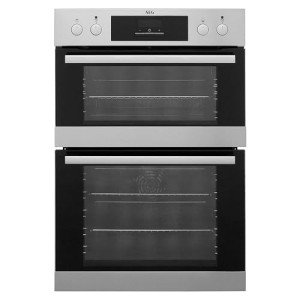The Rise of Built-In Ovens: A Seamless Approach to Modern Cooking
In contemporary kitchens, where design aesthetic appeals blend flawlessly with functionality, one home appliance stands out as a true game changer: the built-in oven. As house owners and chefs alike continue to look for ingenious services that improve their cooking experience, built-in ovens have actually ended up being increasingly popular. This short article checks out the benefits, considerations, and patterns surrounding built-in ovens, highlighting why they are an essential function in contemporary cooking spaces.
What is a Built-In Oven?
A built-in oven is a cooking area device created to be integrated into the kitchen cabinetry of a kitchen instead of standing alone. Unlike standard freestanding ovens, which can be moved and positioned anywhere, built-in ovens can be found in various styles and sizes to fit specifically within designated areas. Offered in single or double configurations, these ovens offer a structured look that matches contemporary cooking area designs.
Advantages of Built-In Ovens
1. Space-Saving Design
Among the most attractive benefits of built-in ovens is their space-saving design. By integrating the oven into kitchen cabinetry, you can maximize valuable counter and flooring area. This is particularly advantageous in smaller kitchens, where taking full advantage of room is vital. Built-in ovens can be installed at eye level, making them more available and decreasing the requirement to flex down.
2. Visual Appeal
Built-in ovens contribute to a streamlined and cohesive kitchen style. Readily available in different finishes-- such as stainless steel, black, white, and customized kitchen cabinetry-- they can blend perfectly into the overall design. This aesthetic appeal enhances the kitchen area's visual harmony and raises the space, creating a modern and sophisticated atmosphere.
3. Boosted Functionality
Lots of built-in ovens come equipped with innovative cooking technologies, such as convection cooking, steam ovens, and smart features. These improvements enable versatile cooking options, making it simpler to achieve professional-level results in your home. Smart built-in ovens can even link to Wi-Fi, making it possible for users to control the oven remotely, receive notifications, and access a range of cooking programs and recipes.
4. Enhanced Ventilation
Since built-in ovens can be integrated with kitchen hoods and ventilation systems, they can help preserve much better air quality and reduce cooking odors. This is specifically substantial for those who enjoy to prepare with fragrant spices and components, as an efficient ventilation system can keep the kitchen area comfortable and inviting.
5. Customization Options
Built-in ovens offer a wide variety of modification options to suit private cooking designs and needs. From professional-grade devices with multiple cooking modes to compact styles for smaller sized kitchen areas, property owners can choose the oven that fits their specific requirements. Lots of manufacturers likewise offer personalized front panels, permitting you to match the oven's look to your cabinetry for a truly merged look.
Factors to consider When Choosing a Built-In Oven
While built-in ovens have many advantages, there are crucial factors to consider to keep in mind before making a purchase:
1. Cost
Built-in ovens typically come with a higher price than their freestanding equivalents due to their style and installation requirements. It's crucial to consider both the cost of the oven and any extra costs connected to cabinetry modifications or setup.
2. Installation Requirements
Setting up a built-in oven often requires expert support, especially if you require to customize existing kitchen cabinetry. Guarantee that you think about any expenses related to installation, consisting of labor and possible cabinets adjustments.
3. Size and Dimensions

Before acquiring a built-in oven, determine the designated space properly to guarantee an appropriate fit. Built-in ovens can be found in numerous sizes and setups, so selecting one that lines up with your requirements and kitchen style is important.
4. Way of life and Usage
Consider your cooking routines and needs when picking a built-in oven. If you regularly host big gatherings, a double oven might be more useful. On the other hand, if you have a compact kitchen area, a single-wall oven may be adequate.
Trends in Built-In Ovens
The cooking area home appliance market is continuously progressing, and built-in ovens are not exempt from emerging patterns. Some existing patterns include:
Smart Technology Integration: With the increase of smart home technology, built-in ovens now often include connectivity alternatives. This permits users to keep track of cooking development and change settings through mobile apps.
Built-in Oven : As sustainability becomes a concern, numerous producers are investing in energy-efficient built-in ovens that lower energy usage while maintaining efficiency.
Multi-functional Designs: Built-in ovens now offer features such as air frying, sluggish cooking, and steaming, supplying flexibility that satisfies a wide variety of cooking methods.
Conclusion
Built-in ovens unquestionably represent an ideal blend of design, function, and benefit in today's kitchen areas. As more house owners select this modern-day service, the focus shifts to creating a cooking area that is as visually pleasing as it is practical. Whether you are developing a new home or remodeling your cooking area, thinking about a built-in oven could elevate your culinary experience and change your cooking area into an elegant and functional sanctuary. With an array of choices available and ongoing developments in innovation, built-in ovens stay a standout choice for both beginner cooks and cooking lovers alike.
